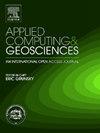利用机器学习的最陡下降算法估计两个大地测量基准之间的七个变换参数
IF 2.6
Q2 COMPUTER SCIENCE, INTERDISCIPLINARY APPLICATIONS
引用次数: 0
摘要
本研究评估了最陡下降算法作为大地测量参考系统中均方根误差优化的工具,以提高变换的完整性。初始RMS误差估计为0.01830m,通过最陡优化应用负梯度方向,最终RMS误差估计为0.00051m。使用精确的直线搜索模式,单点步长为0.1,我们在不到60次迭代中获得了最小值,而不考虑最速下降算法的缓慢收敛速度。本文章由计算机程序翻译,如有差异,请以英文原文为准。
Estimating the seven transformational parameters between two geodetic datums using the steepest descent algorithm of machine learning
This study evaluates the steepest descent algorithm as a tool for root mean square (RMS) error optimization in geodetic reference systems to improve the integrity of transformation. With an initial RMS error estimate of 0.01830m, the negative gradient direction was applied through the steepest optimization leading to a final RMS error estimate of 0.00051m. Using the exact line search mode with a one-point step size of 0.1, we achieved the minimum values in less than sixty iterations, regardless of the slow convergence rate of the steepest descent algorithm.
求助全文
通过发布文献求助,成功后即可免费获取论文全文。
去求助
来源期刊

Applied Computing and Geosciences
Computer Science-General Computer Science
CiteScore
5.50
自引率
0.00%
发文量
23
审稿时长
5 weeks
 求助内容:
求助内容: 应助结果提醒方式:
应助结果提醒方式:


